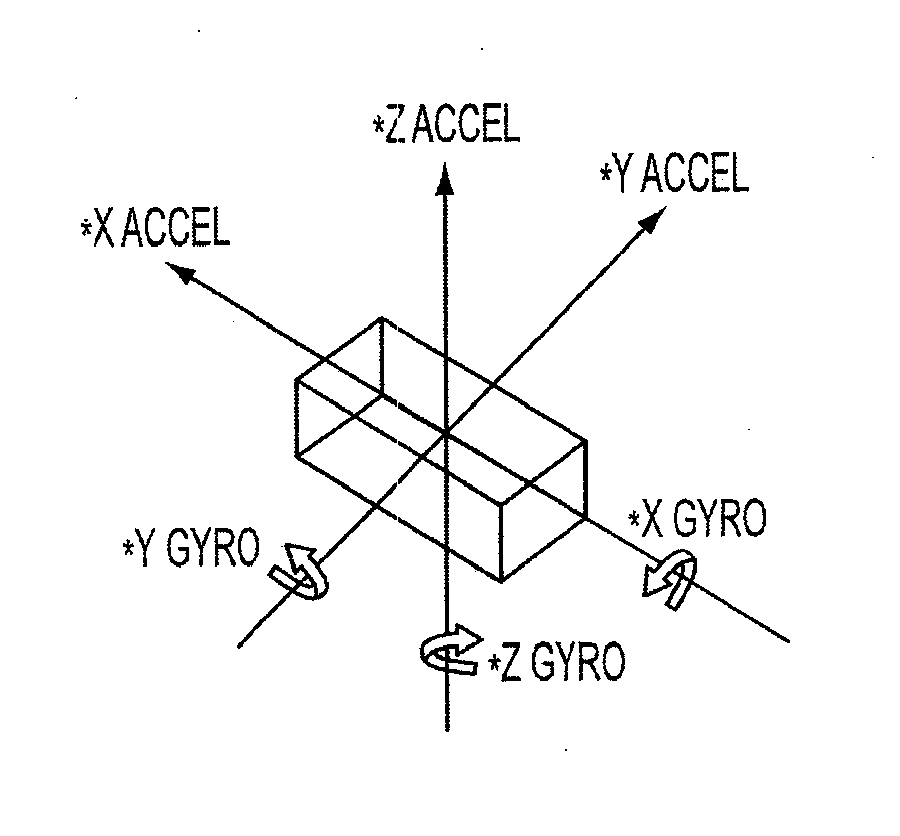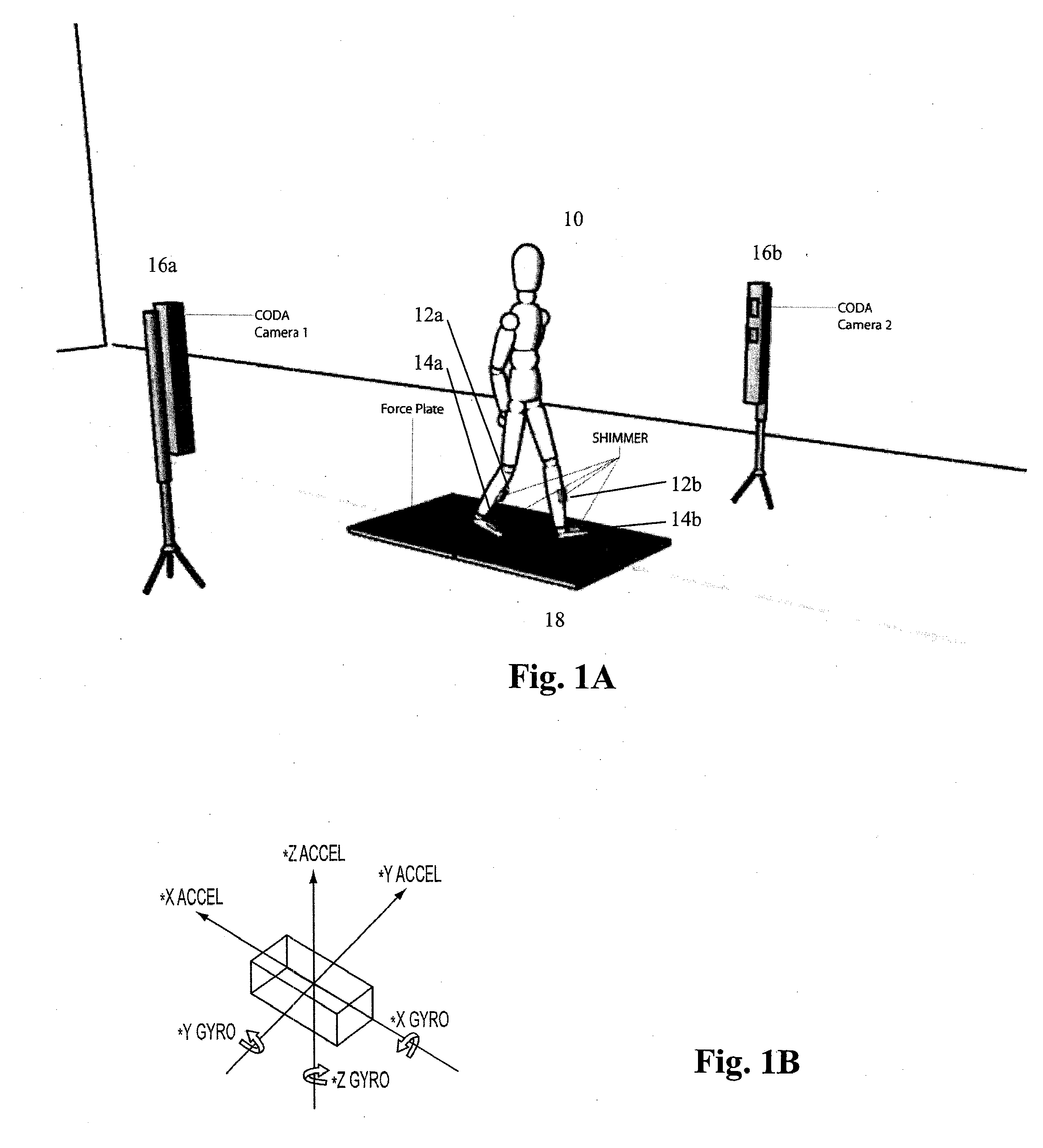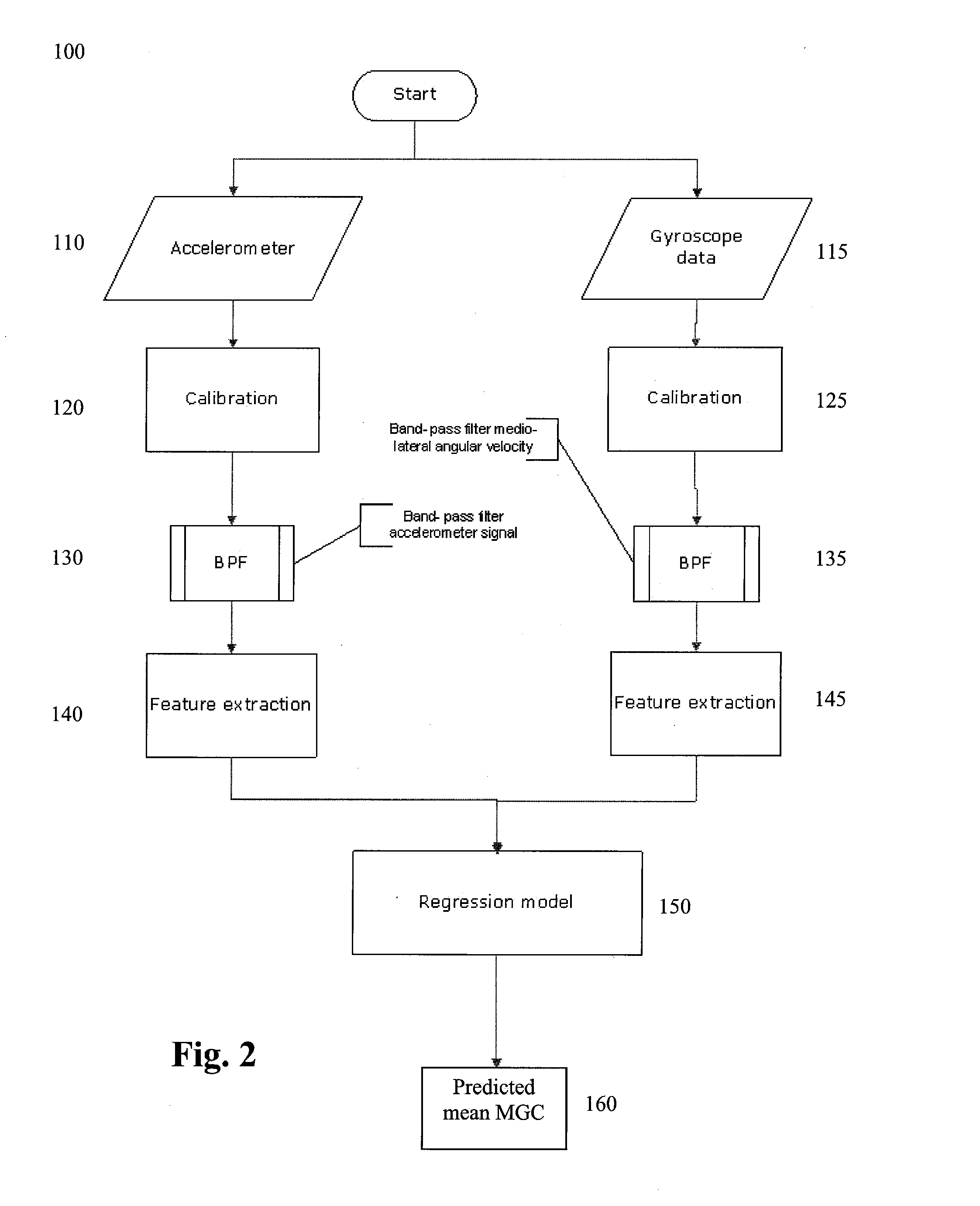Calculation of minimum ground clearance using body worn sensors
a technology of minimum ground clearance and body, applied in the field of walking persons minimum ground clearance calculation, can solve the problems of inconvenient use, high cost, and high cost, and achieve the effect of reducing the risk
- Summary
- Abstract
- Description
- Claims
- Application Information
AI Technical Summary
Benefits of technology
Problems solved by technology
Method used
Image
Examples
Embodiment Construction
[0028]One aspect of this invention is directed toward relating measurements collected from inertial sensors during a walking trial (or any other gait analysis context) and parameters derived from those measurements to a person's minimum ground clearance (MGC). MGC, also called minimum toe clearance (MTC), may be defined as the minimum distance between the foot and the ground during a swing-phase of a gait cycle. At that instant, the foot may be at or near its maximum velocity, the center of mass of the body is outside its base of support, and a small positional error could result in collision with the ground. Thus, low MGC may be a trip hazard and an indication of a risk of falling, such as in the elderly population. Because measuring MGC with an optical motion capture system may require expensive, specialized equipment and personnel, the MGC and MGC parameters, or their estimates, may instead be calculated from parameters measured by or derived from one or more inertial sensors mou...
PUM
 Login to View More
Login to View More Abstract
Description
Claims
Application Information
 Login to View More
Login to View More - R&D
- Intellectual Property
- Life Sciences
- Materials
- Tech Scout
- Unparalleled Data Quality
- Higher Quality Content
- 60% Fewer Hallucinations
Browse by: Latest US Patents, China's latest patents, Technical Efficacy Thesaurus, Application Domain, Technology Topic, Popular Technical Reports.
© 2025 PatSnap. All rights reserved.Legal|Privacy policy|Modern Slavery Act Transparency Statement|Sitemap|About US| Contact US: help@patsnap.com



